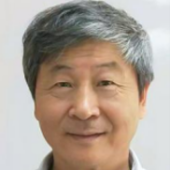
Industry & development of seaweed and marine algae in Greater China
Industry & development of seaweed and marine algae in Greater China
K. Jim Jem, Visiting Professor & Researcher, Chinese Academy of Science NIMTE, China

Industry & development of seaweed and marine algae in Greater China
K. Jim Jem, Visiting Professor & Researcher, Chinese Academy of Science NIMTE, China
About the speaker:
Dr. K. Jim Jem is a Visiting Professor & Researcher at NIMTE (Ningbo Institute of Materials Technology & Engineering) under Chinese Academy of Science. Previously, he spent 20 years in the US working for biotech industries, and received 2 M.S. degrees, a double-major Ph.D., and multiple awards. After returning to Greater China in 2000, he has worked for international biotech and bioplastic companies and served as a visiting professor for several universities, as well as the advisors for NPOs, including the Global Forum of Human Settlements and the China Office of World Ecology Organization. He has been frequently invited to present in local and international conferences and organizations including COP-15 and UN reginal offices.
Company info:
Ningbo Institute of Materials Technology and Engineering (NIMTE) was founded in 2004 by Chinese Academy of Sciences (CAS) and local/provincial governments, dedicated to strengthening cooperation with industries and research organizations in the fields of new materials, advanced manufacturing, new energy and bioengineering. With more than 1200 staffs, including over 400 overseas scholars, NIMTE offers 2 postdoctoral research stations and 10 master/doctor degree programs for 2250 graduated students. The institute has been collaborating with 1500 well-established industries plus 240 universities and research institutes from over 30 countries and regions.
Presentation:
Greater China the largest seaweed producing country in the world, with annual volume of 2.7 million metric tons (in dry weigh), accounting for 57% of seaweeds produced worldwide. This includes kelp (Laminaria), Gracilaria, Undaria, and laver (Prophyra), etc. China is also the largest importer of crude seaweed in the world, and the largest exporter of seaweed and its hydrocolloids. China converts seaweeds to fertilizers, bio-stimulants, chemicals, medicines, hydrocolloids like alginates, which are used in fiber and apparel production. Polluted Ulva spp. found along the eastern shores of China has been tested to produce adhesives, while the polluted Sargassum in Caribbean has been combined with waste marine plastics to produce plywood samples. Research on the impacts of microplastics on algae and other marine organisms is underway, with the hope of finding a solution for the global plastic pollution problem.
For the goals of reaching a CO2 emission peak by 2030 and CO2 neutralization by 2060, the Chinese government established its own carbon-emission regulation, “CCER”, to initiate its domestic carbon-trading programs for the seaweed and marine-agriculture industries under the “Blue Carbon” economy. As the world’s largest plastics producer and CO2 emitter, China is making its ultimate effort to meet sustainable development goals and reduce global environmental problems.